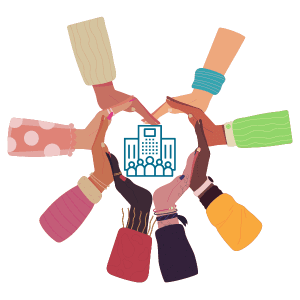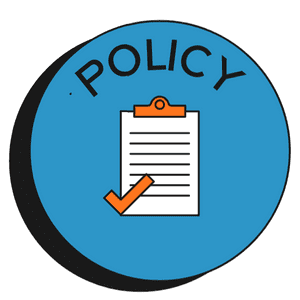Creating an inclusive workplace is essential for building a positive and productive work environment.
Most companies recognize the value of diversity in the workplace. However, it can be difficult to create a truly inclusive workplace. It’s not just about promoting diversity. An inclusive workplace is about creating a culture where everyone feels welcome, respected, and valued.

True inclusion embraces diversity in all forms. This includes gender, race, sexual orientation, age, etc., as well as opinions and beliefs.
An organization that fosters diversity and inclusion improves innovation, collaboration, and overall performance. This guide outlines practical strategies to foster inclusivity, making your workplace more welcoming and effective.
Understand the Importance of Inclusion
Inclusion goes beyond diversity. Diversity means having different people on a team. To go a step further, inclusion means appreciating and including those differences at work. A diverse workplace with different perspectives can help make better decisions, boost creativity, and increase employee happiness.
A recent survey showed that 76% of job seekers believe having a diverse workforce is crucial when looking for a job. This highlights the importance of inclusive workplaces! When asking minority group employees the same question, 80% of Black and Hispanic employees and 79% of LGBTQ+ employees agree.
So, if you’re ignoring the concept of an inclusive workplace, you’re limiting your talent pool before you even start hiring!
How an Inclusive Workplace Benefits your Organization
As we mentioned above, working to create an inclusive workplace will certainly help you attract and retain top talent. However that’s not the only benefit!
When workplaces are diverse and inclusive, you will likely see a reduction in burnout along with a boost in productivity and creativity. With a more diverse team, you will have multiple perspectives and ideas for creative projects. When everyone is comfortable and people feel safe to contribute ideas and efforts, productivity will rise rapidly. So, what can you do as a leader and business owner in order to foster an inclusive culture in your workplace?
Leadership Commitment

Inclusive workplaces start at the top. Leaders must demonstrate a commitment to, and focus on inclusion through their actions and policies. This involves:
- Leading by Example: Leaders should model inclusive behavior by treating everyone with respect and acknowledging diverse viewpoints.
- Setting Clear Expectations: Establish and communicate clear policies that promote inclusivity and prohibit discrimination and harassment.
- Ongoing Education: Provide regular training on diversity, equity, and inclusion (DEI) to your employees. This keeps everyone informed and engaged with inclusive practices.
Once employees can see leaders setting this example, it will naturally spread throughout the organization!
Foster Open Communication
Open and honest communication is crucial for an inclusive workplace and employee experience. Encourage employees to share their ideas and concerns without fear of retaliation. This can be achieved through:
- Feedback Mechanisms: Implement anonymous surveys and suggestion boxes to gather employee feedback.
- Regular Check-ins: Hold regular one-on-one and team meetings to discuss any issues and celebrate successes.
- Transparent Decision-Making: Ensure that decision-making processes are transparent and involve input from a diverse group of employees.
Promote Equal Opportunities
A critical factor when fostering an inclusive workplace is ensuring that all employees have equal access to opportunities for growth and development. This includes:

- Career Development: Provide mentoring programs, training sessions, and career advancement opportunities for all employees.
- Fair Evaluation: Implement unbiased performance evaluation processes to ensure fair assessments.
- Inclusive Hiring Practices: Use diverse hiring panels and create job descriptions that appeal to a wide range of candidates.
Celebrate Diversity
Acknowledge and celebrate the diverse backgrounds of your employees in you inclusive workplace. This can be done through:
- Cultural Events: Organize events and activities that highlight different cultures and traditions.
- Recognition Programs: Recognize and reward employees who contribute to fostering an inclusive environment.
- Inclusive Spaces: Create physical and virtual spaces where employees can share their cultures and experiences.
Support Employee Resource Groups
Employee Resource Groups (ERGs) are voluntary, employee-led groups. They aim to foster a diverse, inclusive workplace aligned with the organizations they serve. ERGs can provide:
- Support Networks: Offer support and networking opportunities for employees from underrepresented groups.
- Professional Development: Create opportunities for skill development and career advancement.
- Community Engagement: Encourage participation in community service and outreach programs.
Implement Inclusive Policies

Develop and enforce policies that support inclusivity and create a sense of belonging, such as:
- Flexible Work Arrangements: Offer flexible hours and remote work options to accommodate different needs.
- Inclusive Benefits: Provide benefits that cater to a diverse workforce, including mental health support, parental leave, and healthcare options.
- Zero Tolerance for Discrimination: Establish clear procedures for reporting and addressing discrimination and harassment.
Utilize Technology
The important thing to remember with a diverse and inclusive workplace is that it needs to be considered at every level.. Leverage technology to support your inclusivity efforts:
- Accessibility Tools: Implement tools and software that make it easier for employees with disabilities to perform their jobs.
- Communication Platforms: Use platforms that facilitate communication and collaboration among all team members, regardless of their location.
- Data Analytics: Use analytics to track the effectiveness of your DEI initiatives and make data-driven improvements.
- Unbiased Scheduling Tools: Although it is typically un-intentional, schedulers can carry some of their own bias into the employee scheduling processes. With an automated scheduling tool, you can remove that bias and ensure fair and equal shift assignment for all employees. At Celayix, our AI schedule assistant tool allows you to do this with ease.

Continuous Improvement
Inclusion is an ongoing effort. Regularly assess your workplace culture and make necessary adjustments. This can be done by:
- Regular Assessments: Conduct regular surveys and assessments to gauge the inclusivity of your workplace.
- Feedback Loops: Create systems for ongoing feedback and continuous improvement.
- Adapt and Evolve: Stay informed about best practices in DEI and be willing to adapt your strategies as needed.
Fostering an inclusive workplace is not just the right thing to do; it’s also beneficial for your organization. By committing to inclusive practices, promoting open communication, and supporting diversity, you can create a work environment where everyone feels valued and empowered to contribute their best.




